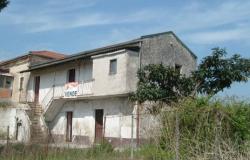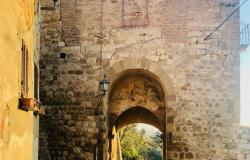A new study by Italian estate agents association FIAIP shows that the second home market continues to hold, but the gap between top and bottom values is reducing
The second home market in Italy is weathering the economic storm. This is the chief finding of a new study by Italian estate agent association FIAIP, in association with Risposte Turismo.
The research examines the second home market in the second half of 2008—when the mainstream residential market took its greatest dive—and looks at the first months of 2009. And the pictures that emerges from the data, which covers Italy’s top twenty resorts, is reassuring.
Although there are local variations, the second home market has on average remained stable over previous years. Sure, sale volumes are down to the tune of 10% and supply is marginally up (about 4.2%) but property values continue to hold, achieving a national average minimum of €2,810 per square metre and a maximum of €6,210. Buyers, who come both from Italy and abroad, are mostly looking for small properties (up to 60 square metres) or medium ones (up to 120 square metres). However, the crisis is having a surprising effect on second home prices—the gap between top and bottom is becoming narrower. This is because bottom values have increased, whereas top values have slightly decreased (by just 0.6% for central locations and up to 2% for semi-central or outskirt ones). This would seem to indicate that people are no longer prepared to spend wild sums for their second home, especially if it doesn’t tick the ‘perfect location’ box.
However, the crisis is having a surprising effect on second home prices—the gap between top and bottom is becoming narrower. This is because bottom values have increased, whereas top values have slightly decreased (by just 0.6% for central locations and up to 2% for semi-central or outskirt ones). This would seem to indicate that people are no longer prepared to spend wild sums for their second home, especially if it doesn’t tick the ‘perfect location’ box.
That said, properties at the upper end of the market command well above €10,000 per square metre in the sought-after seaside resorts of Santa Margherita Ligure, in Liguria, Forte dei Marmi in Tuscany, and Porto Rotondo, in Sardinia, and in the mountain resorts of Courmayeur and Madonna di Campiglio. And while the values for Santa Margherita are slightly lower than in 2007, those for all types of property in the other locations are stable or even up year on year (in Madonna di Campiglio). Property in the Trentino mountain village now costs a minimum of €5,500 for homes in the outskirts to €14,000 for top level homes in the centre.
Even though they don’t reach Madonna di Campiglio’s lofty peaks, a handful of other Italian locations also bucked the downturn, recording annual increases in values for every type of second home—Jesolo Lido in Veneto, Lignano Sabbiadoro in Friuli Venezia Giulia, and Cefalù in Sicilia.
At the opposite end of the scale, four destinations saw a price decline in every property category—Sestriere in Piedmont, Termoli in Molise, Tropea in Calabria and Rimini, in Emilia Romagna.
Looking at price movements in perspective, however, the trend remains good—since 2004, when FIAIP first launched the study, second homes in Italy have grown in value by a minimum of 9.2% (for the lower end of prestige homes) to a maximum of 36.8% (for homes in central locations).
For 2009, FIAIP foresee a modest decline throughout Italy, with the notable exceptions of Amalfi, in Campania, and Lido di Jesolo, in Veneto, where increases are expected.













